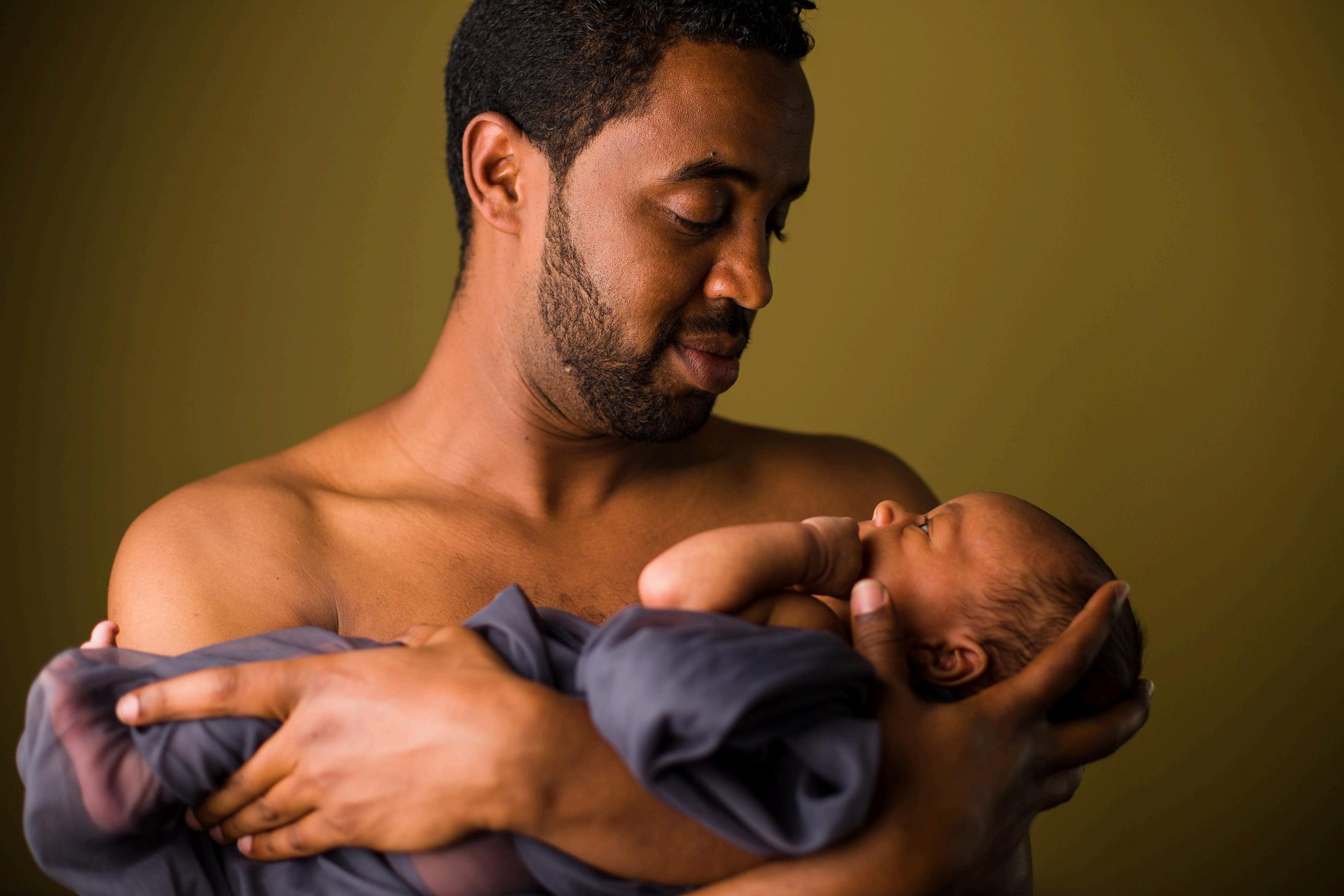Policy Initiatives for Perinatal Equity

Designed, Created and Presented
by Quatia Osorio, BSc, BS-HSM, SPM, CLC, MCHS, CPE


Designed, Created and Presented
by Quatia Osorio, BSc, BS-HSM, SPM, CLC, MCHS, CPE
September


In full disclosure this work is represented in the capacity of an organizational and community leader representing the support of an organization for perinatal equity. The Urban Perinatal Education Center in full disclosure is not engaging in any lobbying activities, as a 501c3 organization.
In this proposal we are highlighting workforce initiatives and the recommendations through the advancement of workforce development for perinatal equity in healthcare.


The mission of Urban Perinatal Education is to create a space for perinatal equity through three lenses: culturally congruent care and community, supporting equity in care, and building a workforce for change. Our focus is to create a safe space of perinatal care for those adversely affected by intentional, long-standing, systematic, and institutional adverse perinatal health outcomes among the Black and BIPOC communities.
Our mission aligns with the embodiment of authentic restoration of Black and BIPOC health, wellness, and welfare over their reproductive rights, choices, and culture. By creating a space of restorative healing and learning, we are deliberate in our mission to promote health equity and promotion.

We want to make a positive impact in public health.
Representation in health care matters and promotes health equity. Recent research suggest that Black provider based care for Black families can cut mortality rates
Supporting Equity in Care
Maternal Health care inequities and disparities remain a symptom of institutional and systematic racism, especially in maternal health. Postpartum studies suggest that extra support and care is necessary to reduce such poor outcomes
We know that communities empowered are the drivers for impact. This is more than recruitment but sustainability of both the community and its workforce race based equity pay is paramount to establishing justice.
In RI, there has been a steady increase in births attended by midwives, with a rise from 12.1% to 19.6% from 2015 to 2021.
This highlights the growing demand for midwifery services during childbirth.
The American Congress of Obstetricians and Gynecologists (ACOG) projects a shortage of 22,000 OB/GYN physicians by 2050 and a 6% increase in demand for pregnancy and birth, gynecological care, cancer screening, and preventative services.


Rhode Island Dept of Health licenses three professions of Midwifery. The Certified Nurse Midwife (CNM), Certified Midwife (CM), and the Certified Professional Midwife/Licensed Midwife (LM). The CNM and CM are trained to work in hospital based setting. The CPM is the provider for out of hospital birth settings, such as birth center and home birth.
The CPM/LM is exclusively trained to work in community/home based setting and birth center settings. This initiative will advance and expand the CPM/LM workforce to address both RIDOH and RI EOHHS priorities.
The RI Certified Professional Midwifery Equity Initiative addresses the disparaging data on Black and BIPOC maternal health birth outcomes in the state of Rhode Island. The efforts of the Urban Perinatal Education Center are intentionally centered in equity promotion for health care and in support of the implementation of a culturally concordant and congruent CPM workforce.
This program (or equity initiative) is supported by the Health Resources and Services Administration (HRSA) of the U.S. Department of Health and Human Services (HHS) as part of the State Maternal Health Innovation grant awarded to the Rhode Island Department of Health and the Urban Perinatal Education Center.

Midwives who identify as Black in the State of RI in data reporting
The license to practice midwifery in RI authorizes the holder to practice the independent management of cases of childbirth, including prenatal, intrapartum, postpartum, and normal newborn care, and well woman care including the management of common health problem. We are addressing maternal health care gaps in practitioner shortage, community accessibility to well woman care, and in home prenatal and postpartum care for families to alleviate the burden to the currently overtaxed medical establishment. Certified Professional Midwifery has been licensed since 2014 and over 37 states, most recently Massachusetts.

We need to address our disparaging data on Black and BIPOC al health birth outcomes, we are intentionally requesting romotion for health care in supporting a culturally dant and congruent Certified Professional Midwifery ce implementation.
tified Professional Midwifery workforce addresses the ty of care of showcasing in community health care coverage home visits and immediate postpartum care follow up d Midwives visit within 24 hours of a birth, 3 days, 7 days, 14 d 6 weeks. There are some local practitioners who extend re into 12 weeks of visits to eliminate any gaps of care during the critcal time of postpartum
Root Causes of Disparities: Quality of Care/Implicit Biases in the Medical System
Pervasive racial bias and unequal treatment of Black women and birthing people in the health care system often result in inadequate treatment for pain and lead to significant unintended outcomes and disparities. This, coupled with stress from racism and racial discrimination, contribute to the unacceptable health outcomes among Black women and their infants Medical racism and interpersonal discrimination historically has impacted Black health and continues to impact Black birthing people today.

1%
According to data from the Centers for Disease Control, 80% of maternal deaths are preventable, signaling that there are deaths that could have been due to poor timeliness, quality of care, or inaccuracies in listening to patients’ needs
Legislation
Births occur outside of a hospital obstetric facility
Racial and Ethnic Disparities in Maternal, Infant, and Young Children’s Health in Rhode Island
and regulations restricting autonomous practice, lack of federal funding for education and training, and inequitable Medicaid reimbursement rates all limit broad access to midwifery care
How Expanding the Role of Midwives in U S Health Care Could Help Address the Maternal Health Crisis
Ensures the availability of qualified and experienced community birth maternity care providers in the event of an emergency that makes hospital care inaccessible (e.g. a hurricane or other natural disaster, pandemic, or flu epidemic). Access to community birth maternity care is in keeping with the mission of the National Working Group for Women and Infant Needs in Emergencies to ensure that the health care needs of pregnant women, new mothers, newborns and infants are adequately met during and after a disaster situation. ~PUSH Campaign 2024

Quality perinatal care within the community; accessible, equitable, diversified and family, culturally centric care.
Seeking limited prescriptive authority and reimbursement through Medicaid services.
Licensed Midwives covered by Medi-Cal with pay parity with OBGYN
Licensed Midwives payment through Fee for Service (Medicaid)
Midwives are considered primary care providers; Licensed Midwives should have prescriptive authority based on work.
60%
National increase in Licensed Midwifery care *highest amongst Black families*
Over 18 States plus DC provide payment mechanisms for

can we deploy?
How can we overcome these obstacles?
What trends can work in this?
What will be the continuing challenges?
$3 million investment from federal funding to build out CPM workforce
Established replicable models of care for CPM workforce
Increasing workforce of Midwives through SMHI and MA CPM licensure
Supportive partnership with RIDOH with SMHI initiative
RI Kids Count sole healthcare policy priority
WFRI WPI partnership support
Newly appointed CPM on Midwifery Council at RIDOH
Zero to low risk families
Families seeking in home care/ birth center facilities
Families seeking the Midwifery Model of Care
Low income families with transportation difficulties Medicaid coverage families who are seeking out of hospital care
Significant cost reduction for insurance companies
Lack of education and misinformation about accessibility, legality, and disparity in CPM care
Lack of Medicaid insurance coverage
Not supported by global billing Midwifery model
Lack of established free-standing birth centers
Hospital based care dominates community low risk care
Low number of accessible CPM care
Zero racial/ethnic/linguistic diversity of current workforce
Lack of state based OOH
Midwifery training facilities and sufficient providers
Massachusetts CPM licensure and birth center CPM model
Existing infrastructure support for MA CPM
The midwifery model of care is based on respect for the intricacy of the natural physiology of childbirth and belief that women's [person’s] bodies are well designed for birth. Midwives try to protect, support, and avoid interfering with the normal processes; thus they try to avoid unnecessary use of obstetric interventions.
In the ACOG statement for home birth, while it does not recommend its support it does validate the childbirth rights of families about their choice of practitioner and location for birthing:
ACOG supports an integrated maternity care system that facilitates collaboration among licensed and accredited clinicians across all birth settings, standardized safety, transfer and transport protocols, and risk-appropriate care at designated facilities. ACOG respects a pregnant person’s right to make a medically informed decision about their birth attendant and place of delivery and believes hospitals and licensed, accredited birth centers are the safest setting for birth
ACOG also supports the worldwide midwifery education standards set by the International Confederation of Midwives’ (ICM) in 2010 as a baseline for midwifery licensure in the U.S. All midwives—including certified professional midwives (CPMs), sometimes referred to as licensed midwives (LMs) and direct-entry midwives (DEMs), and others educated through non-accredited pathways should meet the global standards. Birthing persons in every state should be guaranteed care that meets these important minimum standards
ACOG supports policy initiatives to address the shortage and maldistribution of maternity care clinicians including inter-professional education models that promote collaboration and team-based care.
Furthermore, the AAP supports ACOG standing in the rights of family’s choice for care and in an effort to decrease risk for newborn provide guidance on how to support collaboration with practitioners providing homebirth care and delivery: …while the Academy does not recommend planned home birth, women retain their right of autonomy. “Recognizing this, we provide guidance about factors that increase the risk of home birth, required care for the newborn, and support systems that should be in place to decrease the risk for the newborn.
“Pediatric health care providers should be prepared to discuss these issues “while retaining their role as child advocates in assessing whether the situation is appropriate to support a planned home birth, ” the statement notes.
Recent Research Study on Planned Home Birth vs Birth Center
Planned Home Births in the United States Have Outcomes Comparable to Planned Birth Center Births for Low-Risk Birthing Individuals In low-risk pregnancies, mothers and children are just as safe with a planned home birth as they are with a planned birth center birth, a national study led by Oregon State University researchers have shown.
2 large (n = 50,043; n = 62,984), national community birth registries to compare maternal and neonatal outcomes for planned home versus planned birth center births

Lactation consultants and other lactation support workers can provide valuable support and guidance to help parents overcome these challenges and establish a successful breastfeeding relationship with their infants. Breastfeeding provides many well-established benefits. For infants, parent’s milk provides essential nutrients, growth factors, and immune system components that are vital for healthy growth and development. Breastfed infants have lower rates of infectious diseases, respiratory illnesses, and gastrointestinal problems, as well as a reduced risk of obesity, diabetes, and other chronic health conditions later in life.
23%
Breastfed infants receiving formula before 2 days of age
The Black infant mortality rate is the highest of any racial or ethnic group even after controlling for risk factors such as socioeconomic status and educational attainment. Structural racism as well as exposure to discrimination and racialized stress in the workplace and community negatively impact birth outcomes for Black women and their babies. In Rhode Island between 2016 and 2020, the Black infant mortality rate was 9.8 deaths per 1,000 live births, which is more than three times the white infant mortality rate of 2.7 deaths per 1,000 live births.

Between 2016 and 2020, 71% of new mothers in Rhode Island indicated that they intended to breastfeed when discharged from the hospital and 27% intended to formula feed. 114 Black and Hispanic infants are less likely to be breastfed than white and Asian infants, due to structural, interpersonal, and cultural barriers that Women of Color face. Structural barriers include lack of support and discrimination within the health care setting and minimal paid family leave.
Interpersonal barriers include lack of family support and inadequate workplace policies for breastfeeding moms.
Benefits of Breastfeeding:
Asthma.
Obesity.
Type 1 diabetes.
Severe lower respiratory disease.
Acute otitis media (ear infections).
Sudden infant death syndrome (SIDS).
Gastrointestinal infections (diarrhea/vomiting).
Necrotizing enterocolitis (NEC) for preterm infants
Mothers who breastfeed their babies have a lower risk of: Breast cancer.
Ovarian cancer.
Type 2 diabetes. High blood pressure.

...if 90 percent of U.S. families followed guidelines to breastfeed exclusively for six months, the United States would save $13 billion annually from reduced direct medical and indirect costs and the cost of premature death.

What resources can we deploy?
How can we overcome these obstacles?
What trends can work in this?
What will be the continuing challenges?
RIDOH Statewide Lactation Policy Initiative Update
CDC Lactation funding for implementation through workgroups
Large pool of accessible CLCs through FHV, Certified Professional Doulas, and Certified Community Health Workers
Passage of the Licensure for Certified Lactation Counselors Act (2024)
Increase number of racial/ethnic/ linguistic diversity of the current workforce
All families seeking lactation services without clinical complications
Families seeking in-home lactation education care, support, and services
Families seeking support in provider care spaces
Medicaid coverage for families
Significant cost reduction due to lactation benefits for babies
Lack of education and misinformation about accessibility, scope of practice care
Lack of Medicaid insurance coverage for LCLCs
Lack of lactation infrastructure in FQHCs, CHCs, pediatrician offices, pediatric care systems
Poor lactation support in hospital-based care referral support
Zero telehealth infrastructure for CLCs
Interagency division of IBCLCs vs LCLCs for supports

The community has committed several years of intentional advocacy and support to diversify the workforce, enhance and leverage community resources.
Now we need help in providing solutions for perinatal accessibility in equity with an intentional strategy to create healthier, safer, care for families in their communities. We need support from legislation to support policies to be inclusive of our care.
The Rhode Island Department of Health Maternal Child Health has defined priorities for health equity within the perinatal continuum.
Preconception, Pregnancy and Postpartum:
Priority 1: Improve prenatal health by reducing perinatal health disparities
Strategy 1: Address perinatal health disparities within prenatal health programs
Priority 2: Reduce maternal morbidity and mortality
Perinatal Infant Health
Priority 3: Strengthen caregiver’s behavioral health and relationship with child
Strategy 3c: Support efforts to expand breastfeeding services and supports
Cross Cutting/Community Health
Priority 7: Adopt social determinants of health in MCH planning and practice to improve health equity
Strategy 7d: Amplify family voices and input
Strategy 7e: Ensure health equity programming among Maternal Child Health programs
The Rhode Island Department Executive Office of Health and Human Services has defined priorities for health equity in their Healthcare Workforce Transformation Strategy.
Priority 1: Build Healthcare Career Pathways
Strategy 1: Address Provider Shortages
Strategy 2: Increase Diversity and Cultural Competence
Priority 2: Expand Home and Community Based Care
Strategy 1: Expand Community Based Health Professional Education
Strategy 2: Prepare Healthcare Support Occupations for New and Emerging Roles
Priority 3: Teach Core Concepts of Health Systems and Practice Transformation
Strategy 1: Prepare Current and Future Health Professionals to Practice Integrated, Team Based Care
The Centers for Medicare and Medicaid Services: Advancing Maternity Care Together has defined priorities for health equity in their Blueprint for Addressing the Maternal Health Crisis.
Priority 1: Medicaid Postpartum Care Equity Assessment (Data)
Priority 2: Community-based pregnancy and childbirth care (Workforce)
Priority 3: Social Supports (Social Needs Screenings)

Increase access to quality perinatal care
Develop and collaborate perinatal equity and community
Engage and support
Rhode Island Maternity Care Action Plans

Perinatal mood and anxiety disorders due to isolation, lack of accessibility to perinatal resources, and social supports
Perinatal resources with equitable economic investment and comprehensive infrastructure sustainability
Perinatal accessibility to resources within direct and local communities for population health
Expand provider professionals and accessibility within communities

